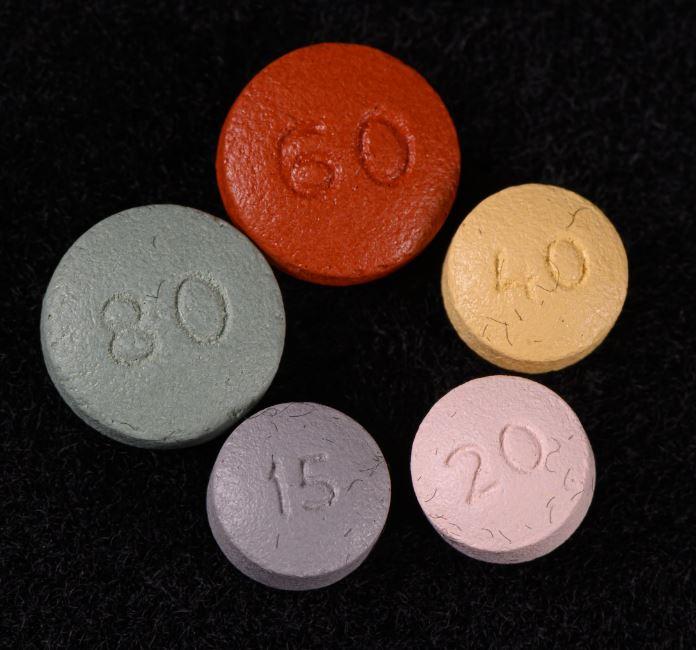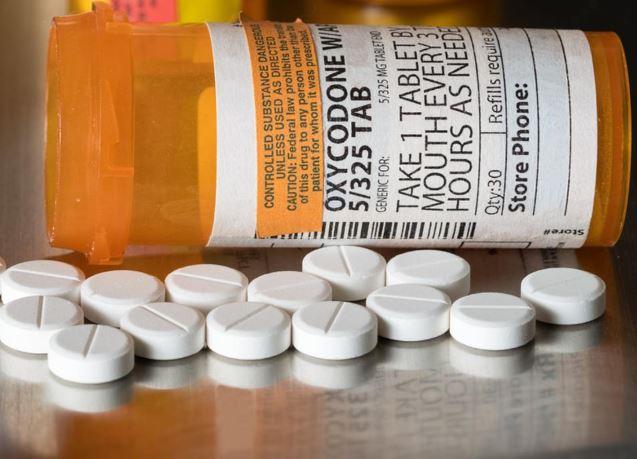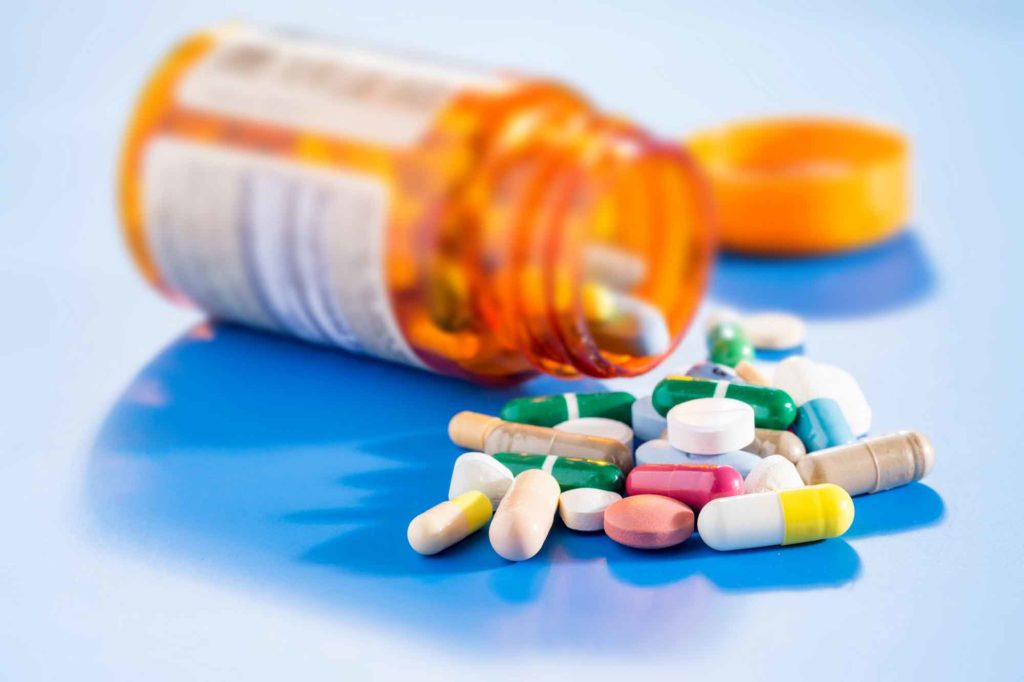How Long Does Oxycodone Stay In Your System?
How long Oxycontin stays in your system can vary based on several factors, including individual metabolism, dosage, frequency of use, and overall health. Understanding the duration of Oxycontin’s presence in your body is crucial for various reasons, such as drug testing, managing medication regimens, and assessing potential risks of interactions with other substances.
When detecting Oxycontin in urine, the timeframe is typically within 1-4 days after the last use. However, it’s important to note that this estimate can vary depending on factors such as the individual’s metabolism and the frequency and dosage of Oxycontin use. In some cases, such as chronic use or higher doses, Oxycontin may be detectable in urine for longer.
How Long Does Oxycodone Stay In Your Blood System?
Blood tests are another method used to detect Oxycontin. The drug is generally detectable in the bloodstream for approximately 1-2 days after the last use. However, it’s worth noting that the detection window can be influenced by factors such as the individual’s metabolism and the sensitivity of the test being used.
Hair follicle tests are a less common but more extended method of detecting Oxycontin. This type of test can detect the presence of the drug in hair strands for up to 90 days or even longer. This extended detection window is because Oxycontin and its metabolites can become embedded in the hair as it grows. However, it’s worth mentioning that hair follicle tests are not as frequently used as urine or blood tests for routine drug screening.
It’s essential to understand that these timeframes are general estimates, and individual variations can occur. Various factors unique to each person can influence the duration of Oxycontin in the system, such as body mass, liver and kidney function, hydration levels, and overall health. Additionally, different drug tests may have different detection thresholds and sensitivities.
Suppose you have concerns about Oxycontin detection in your system. In that case, it’s always recommended to consult with a healthcare professional or a medical toxicologist who can provide personalized information and guidance based on your specific situation. They can offer insights into how long Oxycontin will likely stay in your system based on your circumstances and assist you in making informed decisions regarding medication management, drug testing, and potential interactions.
How Long Does 5mg Of Oxycodone Stay In Your System?
The duration for which 5mg of oxycodone stays in your system can vary based on multiple factors, including individual metabolism, body composition, liver and kidney function, and overall health.
The half-life of oxycodone is approximately 3-4 hours, which means it takes half of the drug to be eliminated from your system. Therefore, after taking a 5mg dose of oxycodone, the drug would typically take 15-20 hours to be eliminated.
However, it’s important to note that trace amounts of oxycodone can still be detectable in certain drug tests beyond the drug’s elimination half-life.
In urine tests, oxycodone is usually detectable 2-4 days after use. However, this detection window can vary depending on individual metabolism, frequency of use, and dosage. In blood tests, oxycodone can typically be detected for up to 24 hours after the last use, although it may be shorter for lower doses such as 5mg.
Hair follicle tests have the potential to detect oxycodone for up to 90 days or longer, as the drug may become incorporated into the hair strands during growth. However, it’s worth noting that hair follicle tests are less commonly used for routine drug screening.
These are general estimates, and individual variations can occur. The sensitivity and specificity of the drug tests can also impact the detection window. If you have concerns about oxycodone detection in your system, it’s recommended to consult with a healthcare professional for personalized information and guidance based on your specific circumstances.

Skip To:
Learn More:
- How Long Does Oxycodone Stay in Urine?
- Oxycodone Withdrawal Symptoms, Timeline & Treatment
- What Is Oxycodone? Side Effects, Interactions & Drug Abuse
- Can You Shoot Oxycodone?
- Can You Smoke Oxycodone?
- Prescription Pill Detox Program
- Prescription Drugs Addiction
- 10 Most Abused Prescription Drugs In The US
- Withdrawal Symptoms of Prescription Drugs
Get Help. Get Better. Get Your Life Back.
Searching for Accredited Drug and Alcohol Rehab Centers Near You?
Even if you have failed previously and relapsed, or are in the middle of a difficult crisis, we stand ready to support you. Our trusted behavioral health specialists will not give up on you. When you feel ready or just want someone to speak to about therapy alternatives to change your life call us. Even if we cannot assist you, we will lead you to wherever you can get support. There is no obligation. Call our hotline today.
(844) 597-1011How Long Does Oxycodone Stay In Your System? Popular FAQs
-
How Long Does It Take Oxycodone To Leave Your System?
The time it takes for oxycodone to leave your system can vary depending on several factors. These factors include individual metabolism, dosage, frequency of use, and overall health. On average, it takes around 15-20 hours for oxycodone to be eliminated from the body. However, it’s important to note that even after this timeframe, trace amounts of the drug can still be detectable in certain drug tests.
-
Why Should You Want To Get Oxycontin Out Your System?
For several reasons, someone may want to get Oxycontin out of their system. One primary reason is related to medical concerns. If you have completed a prescribed course of Oxycontin for pain management or any other medical condition, you may want to ensure that the drug is no longer in your system. This is to avoid potential side effects or interactions with other medications.
Another reason is related to drug testing. Many employers, athletic organizations, and legal authorities conduct drug tests to screen for the presence of substances, including Oxycontin. If you are subject to drug testing, it’s important to ensure that the drug is cleared from your system to avoid any negative consequences that may arise from a positive test result.
-
How Long Does Oxycodone Acetate Stay In Your System?
Oxycodone acetate is a formulation that combines oxycodone with acetic acid. The duration for which oxycodone acetate stays in your system is generally similar to regular oxycodone. On average, it takes around 15-20 hours for oxycodone acetate to be eliminated from the body.
-
How Long Does Oxycontin Stay In Your System?
Oxycontin typically stays in your system for about 1-4 days.
Oxycodone Drug Facts
Oxycodone Overview
Oxycodone is a potent opioid painkiller that can lead to physical dependence with prolonged use. Symptoms of oxycodone withdrawal, such as muscle aches, nausea, anxiety, and insomnia, can occur when individuals stop taking the drug.
The duration of oxycodone withdrawal can vary, but generally, acute symptoms can last up to a week, and protracted symptoms can last for several weeks or months. Seeking professional help to manage withdrawal symptoms and prevent complications is essential.
Medical detoxification is often recommended as the safest way to withdraw from oxycodone. In short, it’s crucial to know the potential symptoms of oxycodone withdrawal and seek professional help.
How Long Is Oxycodone Withdrawal?
The duration of oxycodone withdrawal can vary depending on several factors, including the duration and intensity of oxycodone use, the individual’s overall health, and co-occurring medical or mental health conditions.
Generally, acute symptoms can last up to a week, and protracted symptoms can last for several weeks or even months.
However, the oxycontin withdrawal symptoms duration can vary for each person. Seeking professional medical help to manage withdrawal symptoms and prevent complications is recommended.
Symptoms Of Withdrawal From Oxycodone
Withdrawal symptoms of oxycodone can include both physical and psychological symptoms. Some of the physical symptoms can include:
- Muscle aches.
- Sweating.
- Nausea.
- Vomiting.
- Diarrhea.
- Dilated pupils.
- Rapid heartbeat.
- Runny nose and sneezing.
- Tremors or shaking.
- Fever or chills.
- Insomnia or other sleep disturbances.
Some of the psychological symptoms can include:
- Anxiety.
- Depression.
- Irritability.
- Restlessness.
- Cravings for oxycodone.
- Difficulty concentrating or thinking clearly.
- Fatigue or lack of energy.
The severity of withdrawal symptoms of oxycontin can vary depending on several factors, including the duration and intensity of oxycodone use, the individual’s overall health, and co-occurring medical or mental health conditions.
Seeking professional medical help to manage withdrawal symptoms and prevent complications is recommended.
Oxycodone Abuse Statistics
Oxycodone is a potent prescription painkiller widely used in the United States. However, its high potential for abuse and addiction has increased concern about its misuse. In this section, we will explore some key oxycodone abuse statistics to understand better the problem’s scope and impact on individuals and communities.
10.1 million
An estimated 10.1 million people aged 12 or older misused opioids, including oxycodone, in the past year in the United States.
Source: NSDUH
14,926
Opioid overdose deaths involving prescription opioids, including oxycodone, increased from 3,442 in 1999 to 14,926 in 2018.
Source: NIDA
3.9%
In 2019, the rate of opioid overdose deaths involving prescription opioids was 3.9% per 100,000 population.
Source: CDC

Get Your Life Back
Find Hope & Recovery. Get Safe Comfortable Detox, Addiction Rehab & Dual Diagnosis High-Quality Care.
Hotline(844) 597-1011
How Many Days Does Oxycodone Stay In Your System?
The duration for which oxycodone stays in your system can vary depending on various factors, including individual metabolism, dosage, frequency of use, and overall health. On average, oxycodone is typically detectable in the body for approximately 1-3 days.
In urine tests, oxycodone can be detected for about 1-4 days after the last use. However, it’s important to note that this detection window may be extended in chronic users or those with slower metabolic rates. Factors such as hydration levels, kidney function, and the specific sensitivity of the drug test being used can also influence the detection time.
In blood tests, oxycodone is generally detectable for a slightly shorter duration compared to urine tests, typically up to 24-48 hours after the last use. Again, individual factors and the sensitivity of the test can affect this timeframe.
Hair follicle tests have the potential to detect oxycodone for a longer period, up to 90 days or even longer. This is because oxycodone and its metabolites can be incorporated into the hair strands as they grow. However, it’s worth noting that hair follicle tests are less commonly used for routine drug screening and are more often utilized in specific circumstances.
It’s crucial to remember that these are general estimates, and individual variations can occur. Other factors such as body composition, liver function, and overall health can impact the duration for which oxycodone stays in your system. If you have concerns about oxycodone detection in your system, it’s advisable to consult with a healthcare professional or a toxicologist who can provide personalized information and guidance based on your specific situation.
First-class Facilities & Amenities
World-class High-Quality Addiction & Mental Health Rehabilitation Treatment
Rehab Centers TourRenowned Addiction Centers. Serene Private Facilities. Inpatient rehab programs vary.
Addiction Helpline(844) 597-1011Proven recovery success experience, backed by a Team w/ History of:
15+
Years of Unified Experience
100s
5-Star Reviews Across Our Centers
10K
Recovery Success Stories Across Our Network
- Low Patient to Therapist Ratio
- Onsite Medical Detox Center
- Comprehensive Dual-Diagnosis Treatment
- Complimentary Family & Alumni Programs
- Coaching, Recovery & Personal Development Events
How To Get Oxycodone Out Of Your System?
Consult a healthcare professional: It’s important to seek guidance from a healthcare professional, such as a doctor or pharmacist, who can provide personalized advice based on your specific situation. They can offer recommendations and discuss any concerns or questions you may have.
- Follow prescribed dosage and schedule: If you are taking oxycodone under medical supervision, ensure that you strictly adhere to the prescribed dosage and schedule. Taking more than the prescribed amount can prolong the drug’s presence in your system and increase the risk of side effects or dependence.

- Allow time for elimination: Oxycodone will naturally be metabolized and eliminated from your body over time. The duration can vary, but typically it takes around 1-3 days for oxycodone to be cleared from your system. Be patient and allow your body to naturally process and eliminate the drug.
- Stay hydrated: Drinking plenty of fluids, especially water, can help flush out toxins and facilitate the elimination of oxycodone from your system. Adequate hydration supports overall kidney function, which plays a role in filtering drugs from your body.
- Maintain a healthy lifestyle: Engaging in regular exercise, eating a balanced diet, and getting sufficient sleep can help support your body’s natural detoxification processes. Taking care of your overall health can contribute to the efficient elimination of substances, including oxycodone, from your system.
- Avoid drug interactions: Certain substances, such as alcohol or other medications, can interact with oxycodone and potentially prolong its presence in your system. It’s essential to follow any instructions provided by your healthcare professional regarding drug interactions and to avoid consuming substances that may interfere with the elimination process.
It’s important to note that these steps are general recommendations and may not apply to everyone. If you have concerns or questions about getting oxycodone out of your system, it’s crucial to consult with a healthcare professional for personalized advice and guidance. They can provide tailored recommendations based on your specific circumstances.
World-class, Accredited, 5-Star Reviewed, Effective Addiction & Mental Health Programs. Complete Behavioral Health Inpatient Rehab, Detox plus Co-occuring Disorders Therapy.
CALL(844) 597-1011End the Addiction Pain. End the Emotional Rollercoaster. Get Your Life Back. Start Drug, Alcohol & Dual Diagnosis Mental Health Treatment Now. Get Free No-obligation Guidance by Substance Abuse Specialists Who Understand Addiction & Mental Health Recovery & Know How to Help.
How Long Does Oxycodone Stay In Your System? We Level Up Dual Diagnosis Treatment
The definition of dual diagnosis, also known as co-occurring disorders, can vary among institutions. Generally, it refers to simultaneously treating a substance use disorder and a mental health disorder. Treating individuals with co-occurring disorders is a crucial aspect of our inpatient treatment. Co-occurring disorders are strongly linked to substance abuse.
We create treatment plans that address withdrawal symptoms, the psychological aspects of drug use, and managing underlying mental health disorders to set clients up for success. A comprehensive mental health assessment identifies treatment possibilities. Our dual diagnosis treatment center provides access to mental health counselors, medical professionals, behavioral therapy, and medication treatment, ensuring the highest quality of care.
We understand the intricate relationship between mental and substance abuse disorders, which can result in a destructive cycle of addiction. We specialize in dual-diagnosis cases, offering the best chance for healing and long-lasting recovery.
Recognizing that you may have a mental illness can be challenging. However, treating substance abuse becomes much easier once you receive a proper diagnosis and treatment. Only qualified medical professionals can diagnose these underlying conditions. If you suspect you have a co-occurring disorder, we encourage you to seek a reputable treatment center to begin your journey to recovery. Contact We Level Up today.
Experience Transformative Recovery at We Level Up Treatment Centers.
See our authentic success stories. Get inspired. Get the help you deserve.
Start a New Life
Begin with a free call to an addiction & behavioral health treatment advisor. Learn more about our dual-diagnosis programs. The We Level Up Treatment Center Network delivers recovery programs that vary by each treatment facility. Call to learn more.
- Personalized Care
- Caring Accountable Staff
- World-class Amenities
- Licensed & Accredited
- Renowned w/ 100s 5-Star Reviews
We’ll Call You
How Long Does Oxycodone Stay In Your System? Oxycodone Addiction Informative Video
Ryan’s Recovery From Fentanyl, Heroin, & Oxycontin Addiction
“Today I am free from drugs. I live by myself in an apartment that I can afford. I can, ya know, My family talks to me when I go home for vacation. I’m welcomed and looked up to by all my friends back home who are still using or who want to be clean today. I get to do whatever I want, travel wherever I want, and not have to have something in my pocket to make sure that I can get through without being sick.”
Ryan’s Addiction Recovery Story
Search We Level Up How Long Does Oxycodone Stay In Your System? Resources
Sources
- National Institute on Drug Abuse (NIDA) – https://www.drugabuse.gov/drug-topics/prescription-drugs/gabapentin
- Substance Abuse and Mental Health Services Administration (SAMHSA) – https://www.samhsa.gov/
- Centers for Disease Control and Prevention (CDC) – https://www.cdc.gov/
- U.S. Food and Drug Administration (FDA) – https://www.fda.gov/
- U.S. Department of Health and Human Services (HHS) – https://www.hhs.gov/
- National Institutes of Health (NIH) – https://www.nih.gov/
- Substance Abuse and Mental Health Services Administration (SAMHSA) – https://www.samhsa.gov/find-help/national-helpline
- U.S. Drug Enforcement Administration (DEA) – https://www.dea.gov/
- National Library of Medicine – https://medlineplus.gov/druginfo/meds/a694007.html
- National Council on Alcoholism and Drug Dependence (NCADD) – https://www.ncadd.org/about-addiction/addiction-update/gabapentin-and-addiction-what-you-need-to-know


